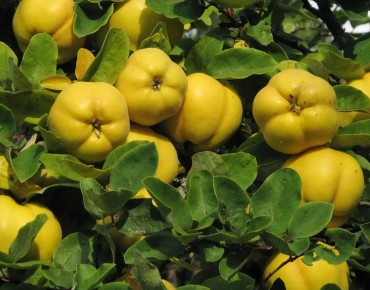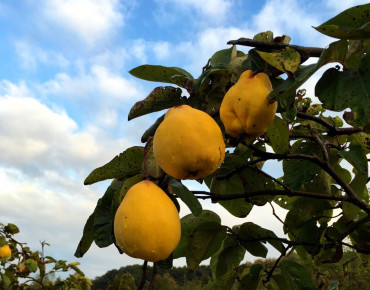- Out-of-Stock
Japanese medlar
Eriobotrya Japonica
Description
Originally from central China, the Japanese medlar or Eriobotrya japonica is a beautiful self-fertile shrub, much appreciated for its ornamental side as well as for its delicious fruits.
The Japanese medlar owes its charm to its large evergreen dark green leaves. Spreading out in lovely rosettes, they are oval and display very pronounced veins, which give them a richly embossed appearance.
The other aesthetic advantage of the Japanese medlar is its late flowering. In the fall, when all the other trees and plants are looking gloomy, your loquat will bring you colour and joy. Melliferous, the flowers are white and come in the form of clusters covered with a beautiful rust-coloured down. While the leaves give off a smell of hawthorn, the flowers spread a delicious scent of bitter almond.
If it is appreciated for its elegant port, the Eriobotrya Japonica is also prized for the succulent fruits that it begins to produce around the age of 8 years, these are rich in B vitamins, fiber and potassium. Oblong in shape and orange-yellow in colour, the fruits ripen from the end of April. The harvest lasts until June.
The fruits of the Japanese medlar are in the form of clusters, which it is recommended to thin out as soon as the loquats start to appear. You will thus obtain fruits of better size, more beautiful and juicier. Yellowish-white in colour, their pulp will delight you with its refreshing texture and delicately acidulous taste. Cooked, you can make jams, compotes or even liqueurs.
Of rapid growth, it can reach more than 5 m in height. Planted in the ground in a warm and sheltered place, it can even reach 6 m for a wingspan of 3 to 4 m. You should also know that the loquat does not grow in areas where the temperature can drop below -5 °C. Moderately hardy, it will resist down to -9 °C.
Planted in autumn or spring, Eriobotrya Japonica likes full sun and tolerates any type of soil, even a little calcareous, with a preference for deep soils. Protect from cold and strong winds. It will particularly appreciate being leaned against a wall well oriented to the south. In the ground in the Mediterranean basin, but rather in large pots in the northern regions. Water it regularly for the first year, but avoid standing water at the roots. Install a good mulch at its base, all year round. Pruning after fruiting will keep it a nice silhouette.
Features
- Common name : Japanese medlar - Loquat
- Family : Rosaceae
- Category : fruit tree
- Spread : 3 to 4m
- Foliage : deciduous
- Color of flowers : creamy-white
- Fruit : Oblong loquat, orange-yellow, tart
- Harvest : April to June
- Use : shrubbery - free or fruit hedges
- Soil : all
- Enemies : mealybug
- Possible diseases : rust disease
Expédition & livraison
How does the delivery work?
 As soon as you place your order your plants are selected
As soon as you place your order your plants are selected Each order is processed individually.
Each order is processed individually. Plants are packed, staked and labeled.
Plants are packed, staked and labeled. Packaging is carefully implemented to avoid any problems.
Packaging is carefully implemented to avoid any problems. Packages are ready to be shipped.
Packages are ready to be shipped.
Our delivery methods
Shipping of our plants throughout Europe (except overseas and islands).
Customer reviews





























